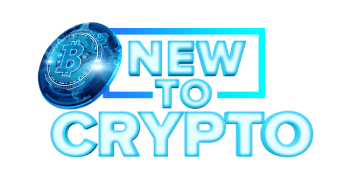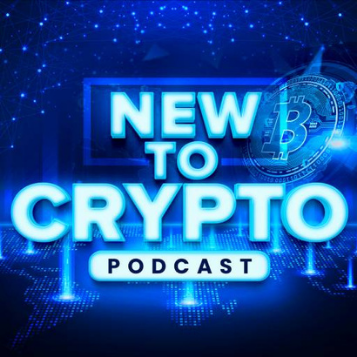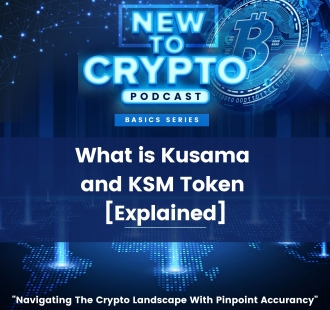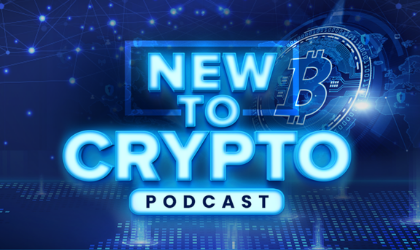Unknown Speaker 0:00
Welcome to the New To Crypto podcast designed to guide you through the crypto landscape with pinpoint accuracy created for the new and intermediate crypto investor. Join your host Crypto Travels Michael as he takes you through the different facets of getting started and succeeding in your crypto journey. New to crypto podcast brings you new episodes daily Monday through Friday with surprise bonus episodes sometimes on the weekend. Let me ask you, are you new to crypto don’t know where to start? Are you more experienced but have questions? Then you’re in the right place. This podcast is designed for you, coming at you from the training center in the lifestyle design studio. Here’s your host Crypto Travels Michael.
Unknown Speaker 0:51
Welcome to today’s episode. I’ll tell you we broke 100 We broke 100 countries around the world have downloaded and listened to this podcast. So we truly thank you. I really thank you the listener and I’m excited as we dive into more people in over 1100 cities around the world have chimed in to this podcast and so it’s an exciting time. And without further to do, let’s jump into today’s episode. It’s all about Kusama. So what is Kusama? Kusama is actually a test project of Polkadot. Kusama allows any developer to experiment and test new blockchains or applications before releasing them on the network. Kusama is a canary network. The name Canary comes from the idea of canaries that were used in coal mines to give warning to miners by detecting carbon monoxide and other toxic gases that would hurt them. Kusama acts as a canary by warning and helping detect any kind of vulnerabilities or weaknesses in the Polkadot code base.
Unknown Speaker 1:56
Because its primary use case is to facilitate testing, Kusama attempts to give developers more flexibility while they finalize the design of their Polkadot projects. In turn, Kusama offers looser rules than Polkadot, including less stringent governance parameters. So let’s break down and unpack some of the benefits and technology of Kusama. Kusama is known as a canary-net, or test, “an alert network” for the Polkadot project and its major objectives the idea is simple Kusama would be the testing ground for all the technologies that Polkadot would implement in the main network. This way if something goes wrong in Kusama, it is fixed and after it is stable enough that feature becomes part of the final protocol. Polkadot. An interesting idea that eliminates unnecessary risks on Polkadot and allows for accelerated development.
Unknown Speaker 2:53
The birth of Kusama began in July of 2019, when Polkadot presented it on its blog as the first experimental version of this new protocol called Kusama. Kusama allows to do everything that Polkadot allows under real conditions, which is ideal for testing projects under such conditions. Kusama quickly became more than just a test network and many projects bet on using its features as early adopters. As a result, the project began to grow in in a short amount of time its value as a project skyrocket. Kusama is designed to tell Polkadot developers if there’s something wrong in the development of the technology, and that will be integrated into Polkadot in the future the intention with this is to debug the code and prepare it for operation in real working and production conditions. Of course this doesn’t mean that Kusama is a network riddled with bugs.
Unknown Speaker 3:54
Only that Kusama is a testing space for technologies that are not yet considered fully polished, fully ready. At this point, the care of Polkadot’s developers is extreme, understanding especially that they want two things: to create functions that do what they’re supposed to do, especially para-chains and para-threads, and that nothing stops working because of a programming error in a production environment. Kusama works almost the same as Polkadot. In fact the Kusama protocol is almost exactly a copy of the Polkadot protocol where users can use some advanced features that are not yet available in Polkadot. Kusama is like an unaudited version of Polkadot with experimental features and some changes; one of those changes in Kusama we see it on the network governance and update system, in Polkadot this is given a 28 day voting period. However in Kusama that period is reduced to seven days. This means that changes in Kusama happen much faster than in Polkadot.
Unknown Speaker 4:58
There are also other parameters that are different on Kusama: first, epochs in sessions have a duration of one hour and with Polkadot it’s four hours. An era or epoch in Kusama last six hours while in Polkadot, it lasts 24 hours and the slot which is the block generation time is kept at six seconds in both networks. These parameter changes have a strong impact on the KSM token generation. KSM token is the token of Kusama. Beyond this however, Kusama and Polkadot are the same they have the same consensus system the same block production time and the same token nomic policy for the system when it comes to governance three types of Kusama users can influence the software’s development members of a referendum chamber is one, members of the technical committee, and members of the council. So let me ask you who are the founders Kusama was founded by the creators of Polkadot Gavin wood, who’s also a co founder of Ethereum. By the way, Peter Czaban and Robert Habermeier. Gavin Woods background is notable that he invented solidity which is the computer language used by developers to write decentralized applications or Dapps on Ethereum.
Unknown Speaker 6:12
He was also the Ethereum foundations first CTO, and previously was also a research scientist at Microsoft. So let’s unpack a little bit about Kusama’s token; their coin. The initial distribution of the token basically respects the same distribution of dot tokens. If a user participated in the dot ICO, this has access to the same amount of KSM tokens as the obtained in the dot ICO, in fact, is served to incentivize users to make use of the network Kusama and help the team in its development. Perhaps the biggest change in Kusama is related to the generation of tokens through network rewards. This is possible because Kusama the generation of rewards has been accelerated by four times due to changes in the duration of epochs and the eras of block and rewards generation.
Unknown Speaker 7:00
Simply put, Kusama is set to generate more inflation, the current circulating supply of Kusama tokens is just over 8.4 million KSM. And currently, the tokens are traded at around $345 per token. So I hope that this has provided an overview for you today. I know you might have been curious about Kusama, and what is its relationship to Polkadot. So This was meant to give you an overview if you like today’s episode, definitely like and subscribe to the podcast. I’m working hard and bringing valuable content that can help you navigate the crypto landscape and really grow in your understanding in crypto. So until tomorrow, make it a great day.
Unknown Speaker 7:44
Thanks for tuning in to New To Crypto podcast. If you liked the episode, be sure to follow and subscribe. You can listen to every episode on all major platforms. Have an interest in being on the show or want advertising reach out at newtocrypto.io. Head over to our site newtocrypto.io to access the resources mentioned in each episode. Until next time, remember to navigate the crypto landscape with pinpoint accuracy.














